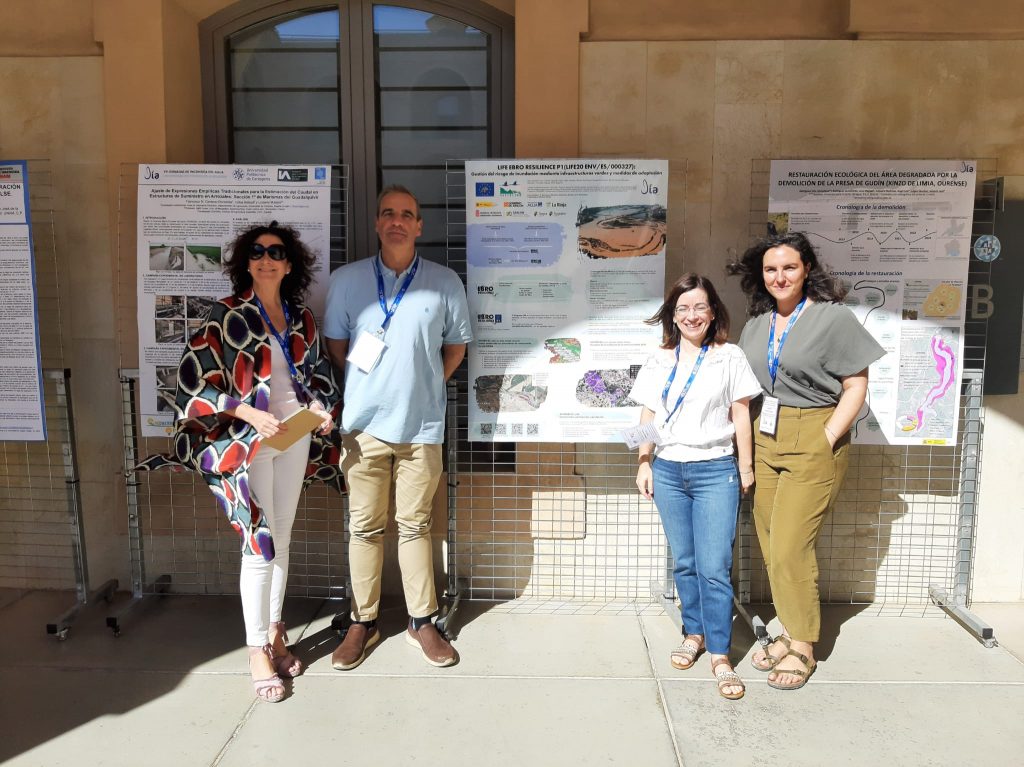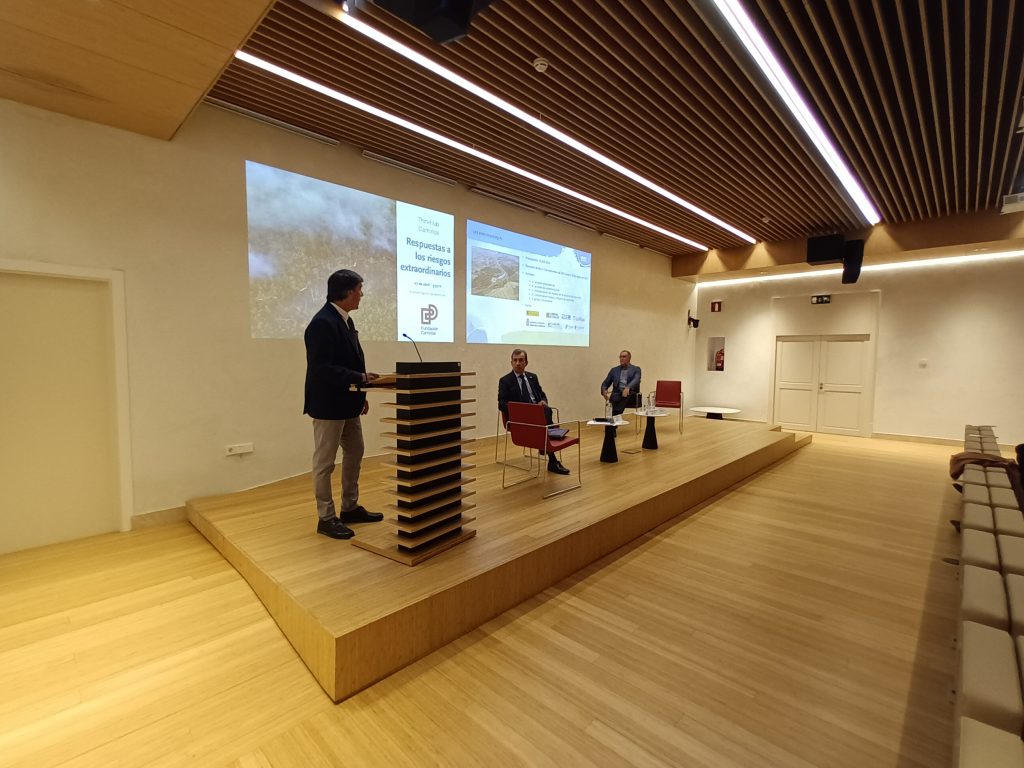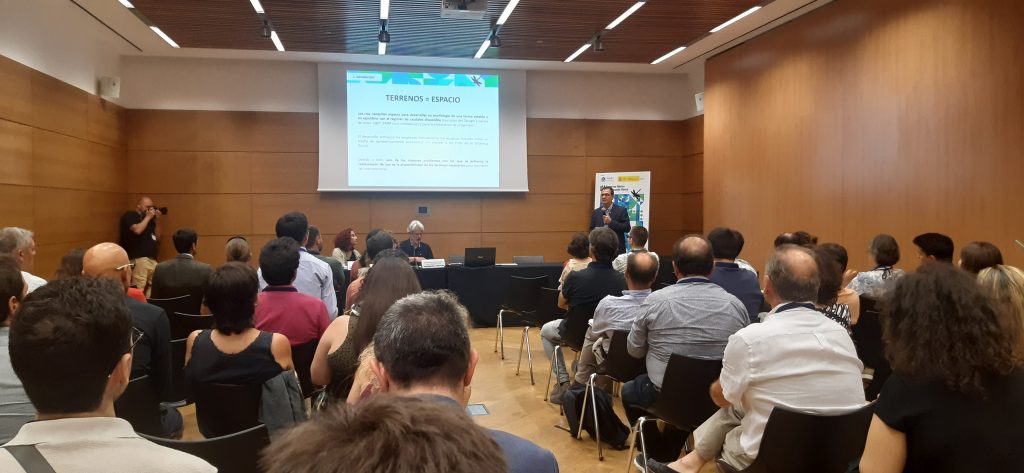In recent weeks, the Project has been expanding its professional and institutional network by participating in various technical forums and hosting international delegations. The example of LIFE actions is being introduced to new audiences.
In November, the project and its actions were presented at the I Jornada de Morfodinámica Fluvial y Observatorio de Sedimentos en Ríos, organized by the Ministry for Ecological Transition and the Demographic Challenge and the University of Zaragoza, which was held in the Aragonese capital on the 15th and 16th.
Ongoing work to increase resilience and enhance river space was the focus of part of the practical session with a field visit to the Ebro River. There, the intervention typologies were explained, both of the general Ebro Resilience strategy for the entire middle stretch of the Ebro, as well as the LIFE Project with its proposals for the Alfaro (La Rioja) – Castejón (Navarra) and Osera de Ebro-Fuentes de Ebro (Zaragoza) stretches.
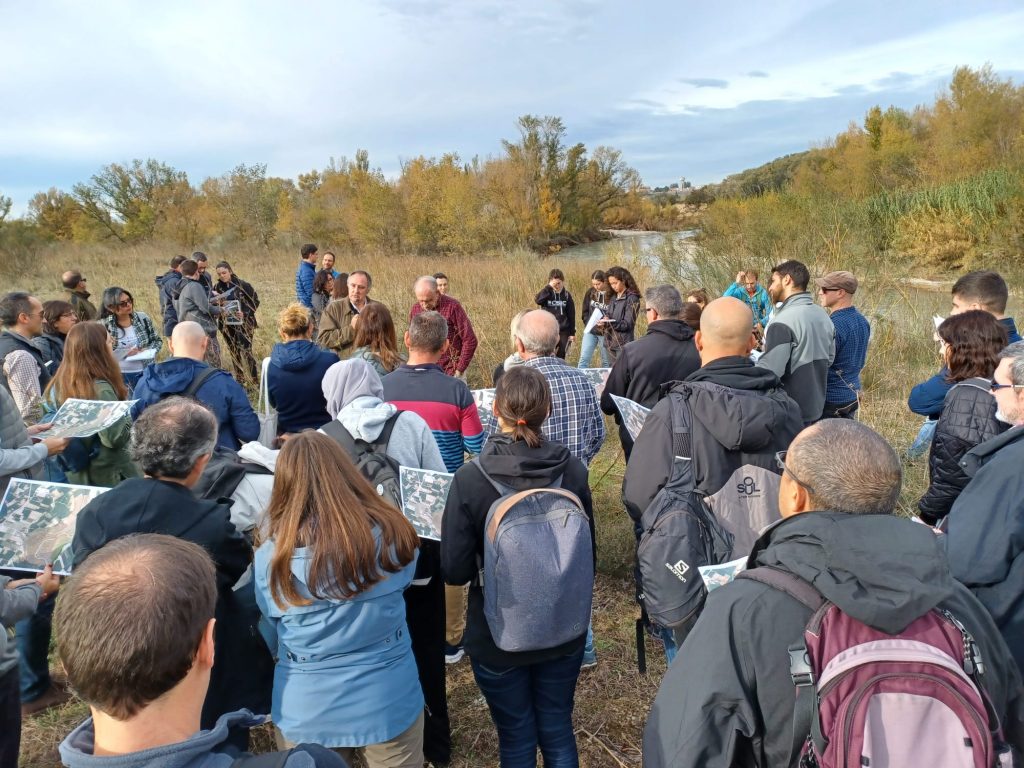
He also traveled to Barcelona for another far-reaching forum, the Water Management in a Changing Climate: Modeling, Forecasting and Advanced Analysis Conference, which DHI organized on 23 and 24 September in collaboration with the International Association for Hydro-Environmental Engineering and Research, the Danish Ministry of Foreign Affairs and Vicomtech, a center specializing in digital technology.
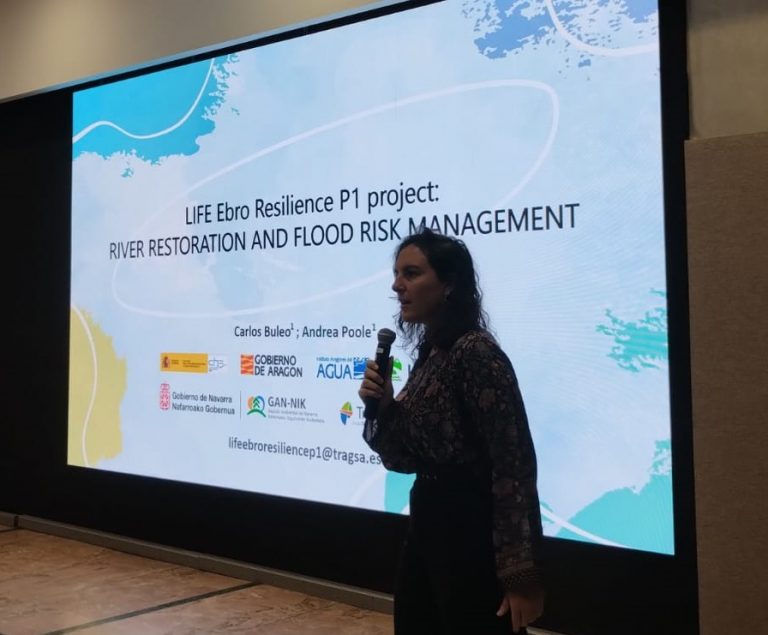
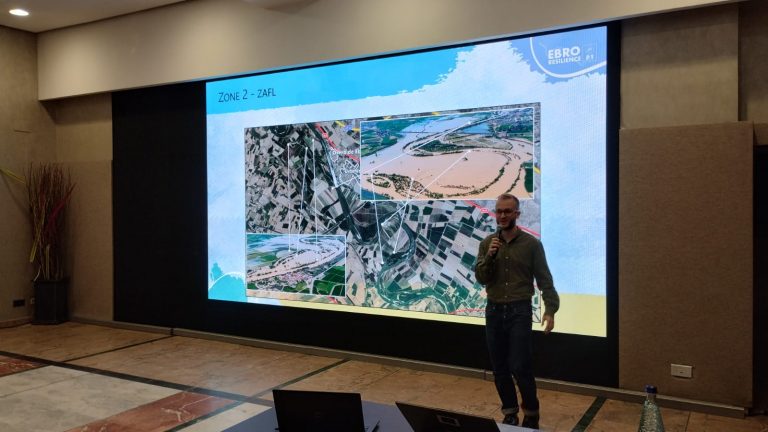
The Project technicians also hosted a delegation from the Ministry of Water Management and Irrigation and the Ministry of Energy and Dams of South Sudan. Its members were very interested in flood risk management actions and experiences carried out in the Ebro basin since 2015, especially flood areas.
In order to gain field experience, they visited intervention areas of the Strategy and learned about the proposals of the LIFE Ebro Resilience P1 Project, such as the lateral flow buffer zones, which apply the concept of pre-flooding to reduce impacts during flood episodes.
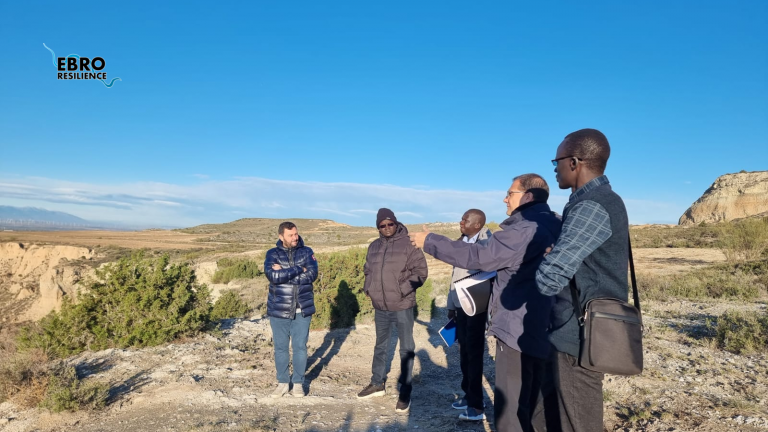
And much more
This is in addition to the presence in October at the Water Engineering Conference organized by the University of Cartagena and the reception in the Project territory of the delegation of the Water Resources Agency of the Government of Poland.
In addition, last June, the LIFE project and the Strategy, its actions, its lines of participation and other aspects, took center stage at the IV Iberian Congress on River Restoration, and were the focus of the April conference “Response to extraordinary risks”, which was held in Madrid and organized by the Colegio Oficial de Ingenieros de Caminos, Canales y Puertos..
Networking, the expansion of professional contact networks and the subsequent replicability of the innovative aspects of LIFE Ebro Resilience P1 to mitigate the effects of floods in other national and European basins have been key to the participation of the European Union in the project.
